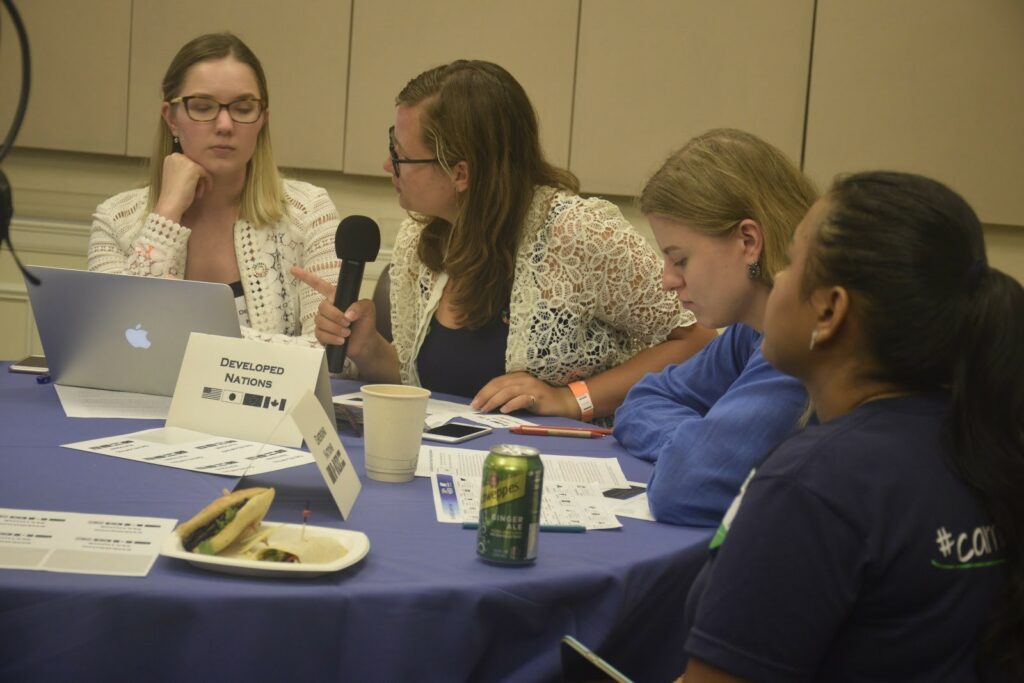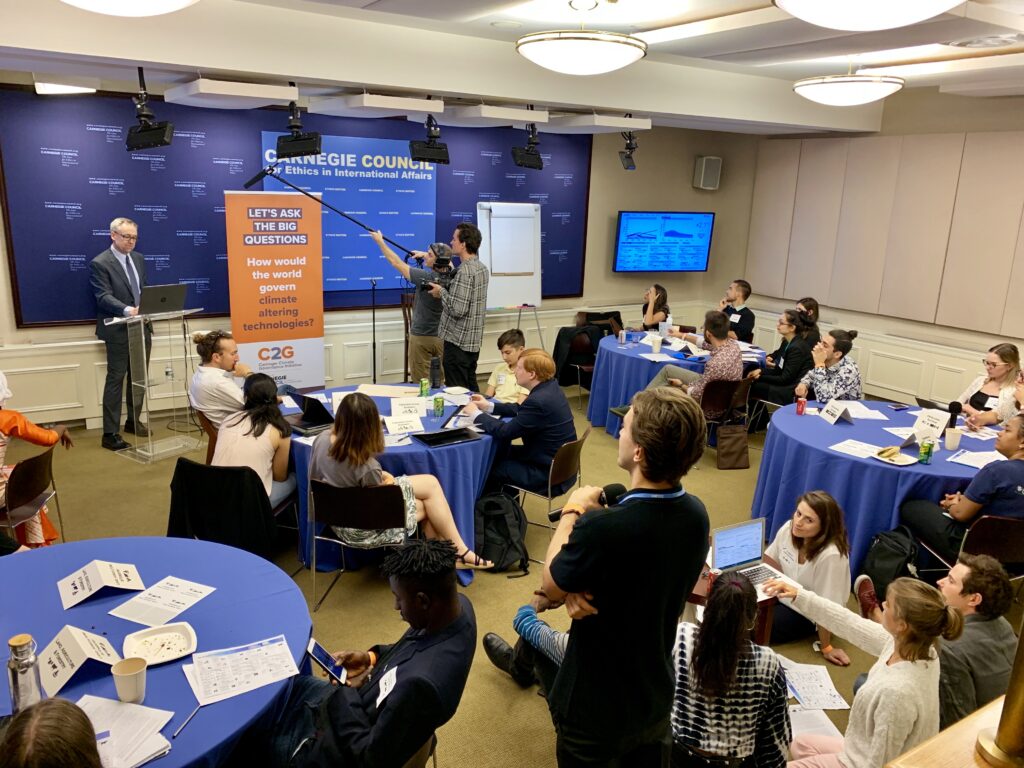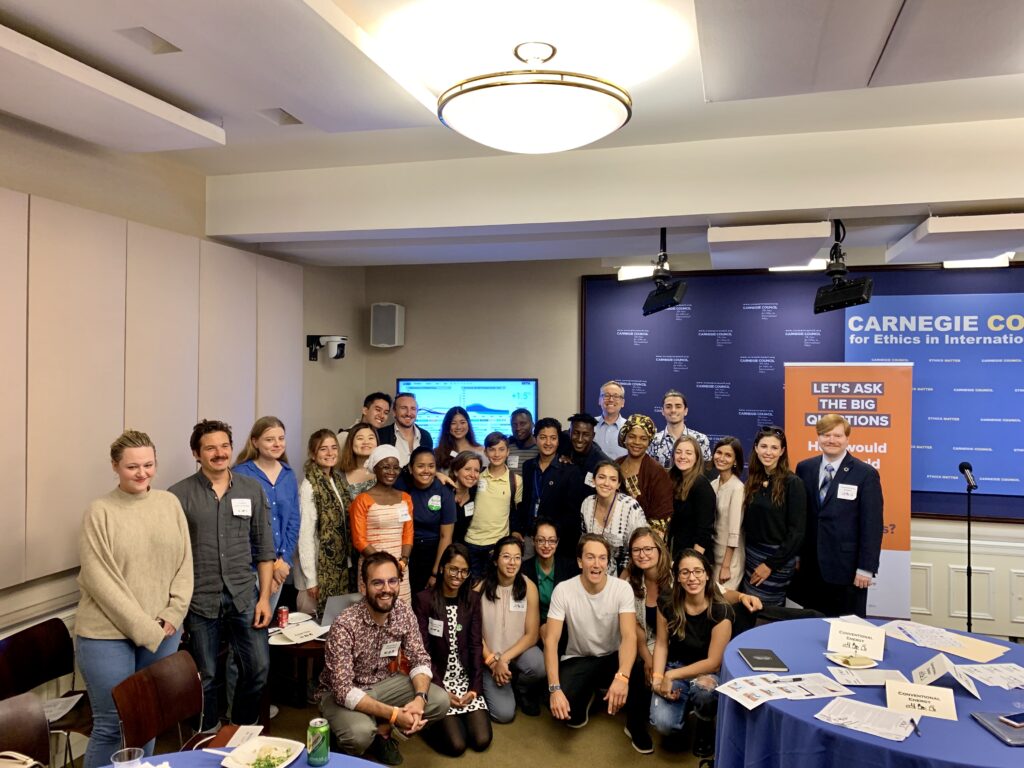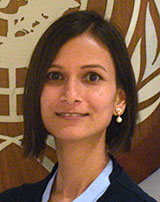Gaming carbon dioxide removal with young climate leaders

What does it really take to stay well below 2°C global temperature rise as agreed in the Paris Agreement? Could technological innovation help remove historical carbon emissions from the atmosphere? How much will afforestation help? What role could a carbon price play?
These are some of the toughest questions in climate policy. But what if you could test them and see for yourself the impacts of policy and technology on our climate system?

Young climate leaders roleplay world governments presenting their policy proposals.
While heads of state and government gathered at the UN Headquarters in New York City, participants in the UN Youth Climate Action Summit took off their activist hats, and role-played 6 sectors that will be key to our climate future: National Governments from around the world, Clean Tech, Industry and Commerce, Climate Activists, Conventional Energy and Land, Agriculture and Forests.
They were convened by a fictitious UN Secretary General, Andrew Jones of Climate Interactive, who (with our help) was running the new game Climate Vision: a model UN roleplaying game on reducing and removing carbon.
The scenario uses En-ROADS, a global climate simulator which allows players to explore how temperature rise is affected by a range of near future scenarios.
Great drama ensued: it turned out that getting to well below 2°C was tough – not helped by groups sometimes fighting over competing agendas!

Andrew Jones of Climate Interactive role-plays the UN Secretary General addressing world leaders
Alongside traditional mitigation efforts, large-scale afforestation, agricultural soil carbon sequestration, and direct air capture were all proposed as ways to remove CO2 from the air.
In each case, one thing became clear: there was no silver bullet. In some cases, major interventions, like large-scale afforestation, moved the dial far less than expected. And yet, every bit mattered in reaching the final goal.
At the end, participants described their feelings: enlightened, threatened, hopeful, frustrated, scared, thrilled.
Mihai Toader-Pasti, Cofounder of EFdeN.org, described En-ROADS as “one of the best tools I have encountered during my nine years as a climate activist. It’s educational not just about CO2 emissions and temperature rise, but also about the social and economic implications.”
Others welcomed an interactive event where they could clearly visualize the gaps in climate action. Some were intrigued by the potential role – alongside other actions – of carbon dioxide removal.

Players celebrate finding a mix of policies to limit warming to 1.5°C
“The full potential of carbon removal technologies to keep global temperatures below 1.5°C have yet to be realized,” said Anna Johnson, Editor, Business Fights Poverty. “So, where did this leave me following the UN Youth Summit event in NYC? Empowered to recognise that we are not without options to turn things around!”
Radostina Slavkova, Energy and Climate Coordinator with Young Friends of the Earth Europe, said, “It was valuable to experience that even some of the most promising and climate friendly measures combined weren’t bringing enough positive change to reach 1.5°C. It became clear that we need all sectors aboard showing at least middle to high ambition.”
Timothy Damon, founder and President, Global Youth Development Institute, said the game offered hope “by concretely illustrating the choices we could make to protect our future against climate catastrophe, while also revealing the scale and complexity of this challenge.”
C2G, Climate Interactive and other partners are keen to keep this conversation going, by exploring ways to educate and amplify the voices of young people in the governance of climate-altering technologies. If you would like to learn more, visit http://en-roads.org and https://www.c2g2.net/youth
In support of the UN Youth Climate Summit, C2G hosted a series of interactive games for young climate leaders exploring how society might tackle difficult decisions about whether or not to deploy climate-altering technologies to tackle global heating. Watch the video below to see the highlights.

This gamifying concept is so interesting, wish to know more about this concept.
Yes, it is very interesting indeed! You can learn more also on the Climate Interactive site, and with the Red Cross Red Crescent Climate Centre… it’s worth exploring.